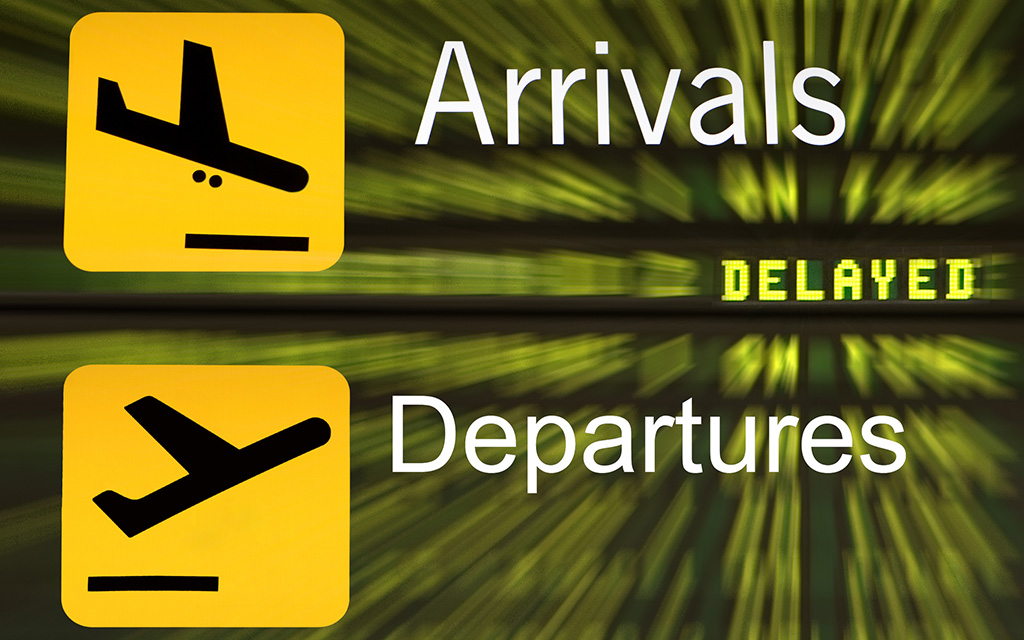Claiming the Foreign Earned Income Exclusion in the Year of Entry & Departure

The Foreign Earned Income Exclusion (FEIE) is a tax benefit available to American citizens, Greencard holders, and in some cases foreign individuals that become residents. It allows an exclusion of up to $126,500 (2024) of income earned in a foreign country from US taxation. The good news is that you can even benefit from the Foreign Earned Income Exclusion in the year of your move.
We explain the FEIE in detail in our Guide to the Foreign Earned Income Exclusion.
If you want to claim the Foreign Earned Income Exclusion, you need to meet either the Bona Fide Residence Test or Physical Presence Test. But how do you do that if you move in the middle of the year?
In this post we cover the following:
- What is the Physical Present Test?
- Physical Presence Test in the year you move…
- What is the Bone Fide Residence Test?
- Bona Fide Residence Test in the year of your move…
- What if the tax deadline is before you meet the FEIE requirements?
- How to claim the FEIE in the year of entry or departure?
Let’s get started.
Let’s look at each of the two tests and how partial years abroad affect them.
What is the Physical Present Test?
Under the Physical Presence Test (PPT), you qualify by spending 330 full days during any 12 consecutive month period in a foreign country. The start or end of these 12 months must fall in the year of filing.
One benefit is you can choose the 12-month timeframe that gives you the greatest exclusion. The 12 months can even overlap one another between qualifying periods of different years.
Another benefit of the PPT is that you to claim the exclusion with a starting date even before you move abroad or after the date you move back. This depends on the number of days you spend outside the United States during that period – 35 (36 in a leap year) during a 12-month period.
Be aware that the IRS defines afull day as 24 consecutive hours, beginning at midnight. The days you are leaving or arriving in the US don’t count towards the 330 days in foreign countries. Neither does any time spent over international waters or passing over foreign countries before you reach your destination foreign country or arrive in the US. Also, “foreign” country does not include US possessions or territories.
We explain the details and give examples in our Guide to the Physical Presence Test.
Physical Presence Test in the year you move…
Let’s say you moved from the US to a foreign country later in the year 2023. You could still meet the test by using your foreign days in 2024 if you have a total of 330 foreign days in 12 consecutive months. Similarly, if you moved back to the US early in 2024, you could use your foreign days from 2023 to meet the test.
The above is only to meet the eligibility criteria. Your income exclusion amount will be prorated to the number of foreign days in 2023 on your tax return.
If reading this, you are worried that you missed this opportunity – worry not! We could still help by amending your tax return for the split year. You can schedule a consultation with us here to know more about your options.
What is the Bone Fide Residence Test?
Under the Bona Fide Residence Test (BFR), you qualify by spending an uninterrupted period including an entire tax year (January 1 to December 31 for calendar year taxpayers) in a foreign country with the intention of establishing an indefinite or an extended period of residency in the foreign country.
Occasional visits to the US are allowed in this period. However, you should not have claimed to be a non-resident in the foreign country for tax purposes.
The IRS considers many factors when determining if you meet Bona Fide Residence Test. These factors include your intention, your activities in the foreign country, your length of stay abroad, to name a few. The IRS requires information such as your travel dates to the US, work details, foreign visa limitations, type of home you live in, and family that lives with you when claiming the exclusion.
Another important consideration for being a bona fide resident is the requirement for you to pay income taxes to the foreign country. Although this is an important factor when determining your “tax home”, there are additional factors to take into account when evaluating if you can take the Foreign Earned Income Exclusion. Owning property or just being present in a foreign country are not sufficient to meet the Bona Fide Residency test.
As you can see, the Bona Fide Residence test is subjective. The burden of proof is on the taxpayer if the IRS were to question your status. Read more about how to meet the test in our Guide to the Bona Fide Residency Test.
Bona Fide Residence Test in the year of your move…
Once you spend an entire tax year in your resident country and meet the above-mentioned requirements, you qualify as a bona fide resident.
Your bona fide residency begins with the date of your move to the foreign country and ends with the date you return to the US. This applies even if you changed your residence from one foreign country to another during your time abroad.
Therefore, you can use this test to claim FEIE in the year of your move. However, the exclusion amount is limited to the number of foreign days in the year. The BFR test is only looked at when PPT cannot be used in the year of the move.
What if the tax deadline is before you meet the FEIE requirements?
If you do not qualify for either the Bona Fide Residence or Physical Presence Test by the due date of your return, you can apply for a special extension to the date you expect to qualify. You do this by filing Form 2350. If the IRS accepts your extension, you can file your tax return to include the Foreign Earned Income Exclusion at a later date, at the very latest by January 30 of the following year. This means that you could file your 2024 tax return as late as January 30, 2026!
In extraordinary circumstances, like war or civil unrest, the IRS does waive these time requirements for taxpayers who wish to claim the exclusion but do not qualify for the eligibility criteria because they had to leave the foreign country earlier than expected. For example, the IRS allowed special waivers during the Covid pandemic. However, this is considered on a case-by-case basis and is not commonly accepted.
How to claim the FEIE in the year of entry or departure?
As you can see, it is possible to claim the Foreign Earned Income Exclusion for partial years abroad.
In the first year of moving abroad, the Physical Presence Test is typically used. As explained earlier, even if you leave the US late in the year, you might still be able to qualify for the FEIE and apply for a special extension to file, if necessary.
It is important that you keep good track of all your travel dates from and to the United States. You need those not only to determine if you qualify for the FEIE. The dates are also used to pro-rate the exclusion amount you can use.
To claim the FEIE, you must use IRS Form 2555 and attach it to your US tax return. Form 2555 is not without pitfalls if the tax preparer is not familiar with it.
Moving countries is a big decision and a hassle, not to mention the additional stress of thinking about taxes as well at that time. However, you can make that hassle worthwhile with the right tax planning and easy with the right expat tax advisor! Schedule a consultation with us to make your life easier.
Ready to seek assistance with your US taxes?

Vincenzo Villamena, CPA
Stay Informed With The Online Taxman Newsletter
Your Title Goes Here
Text goes here






